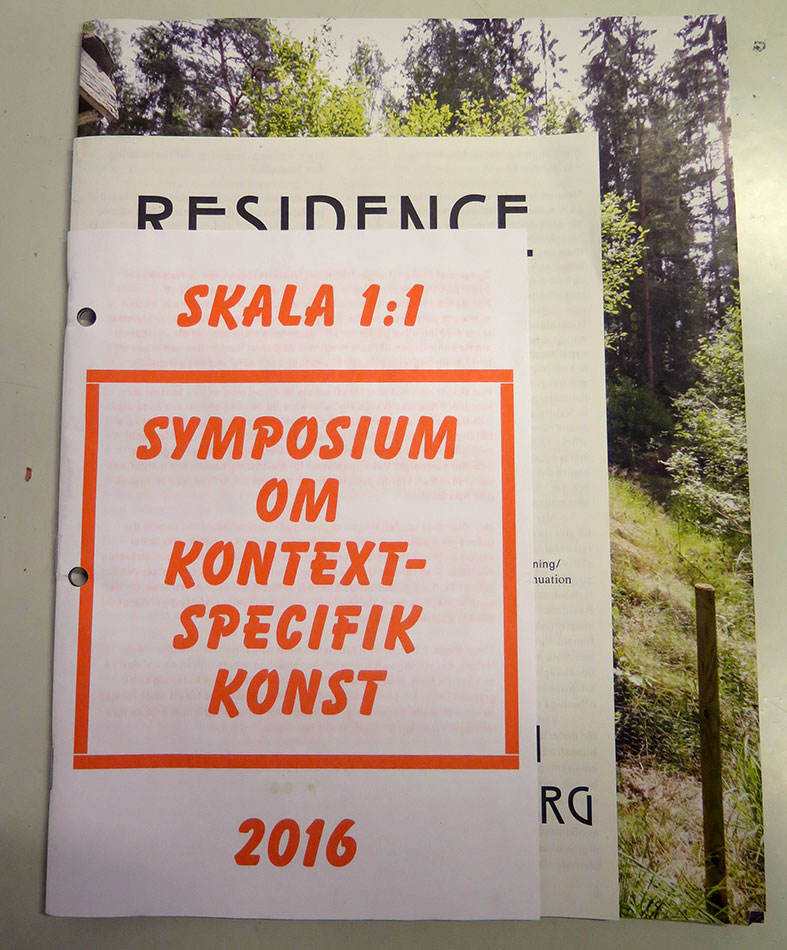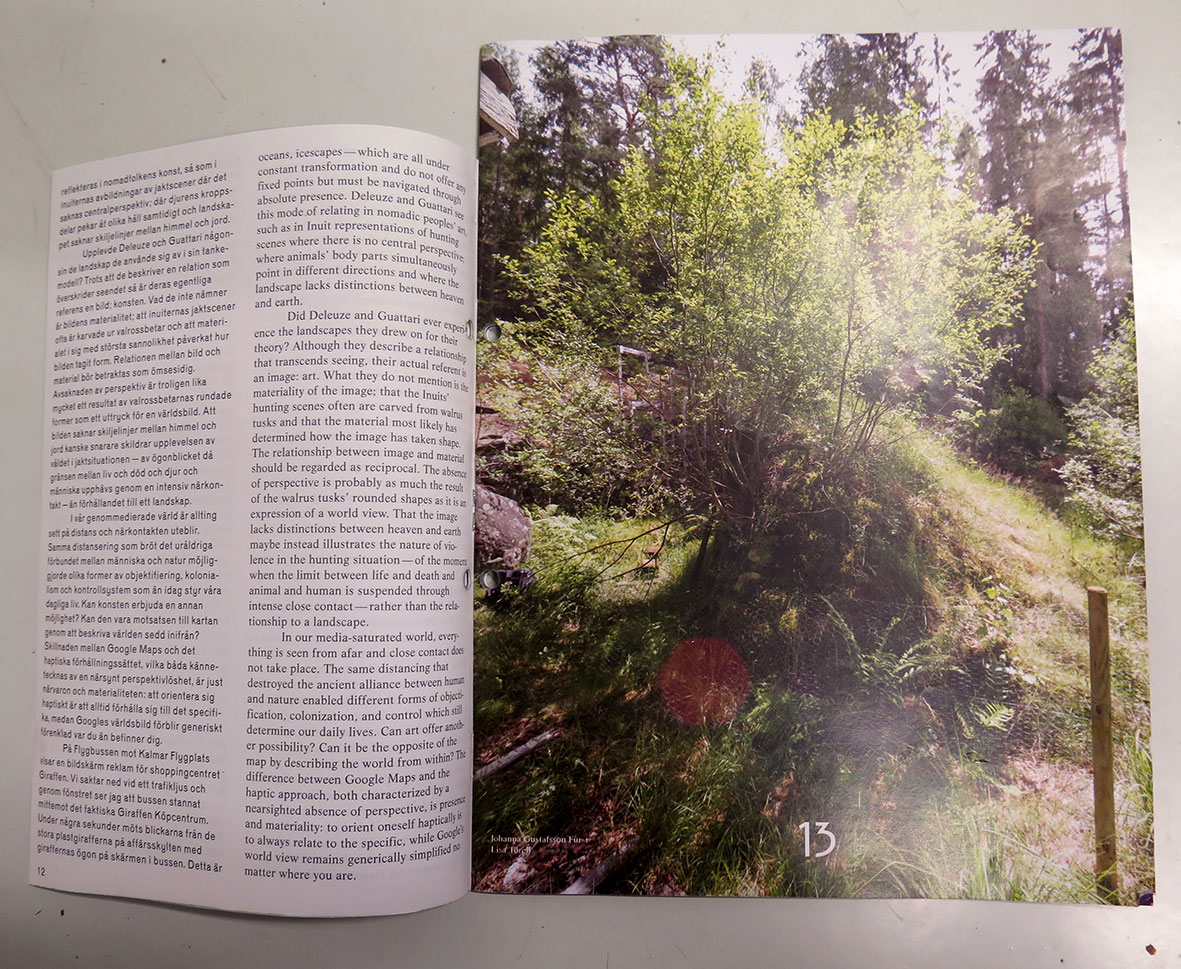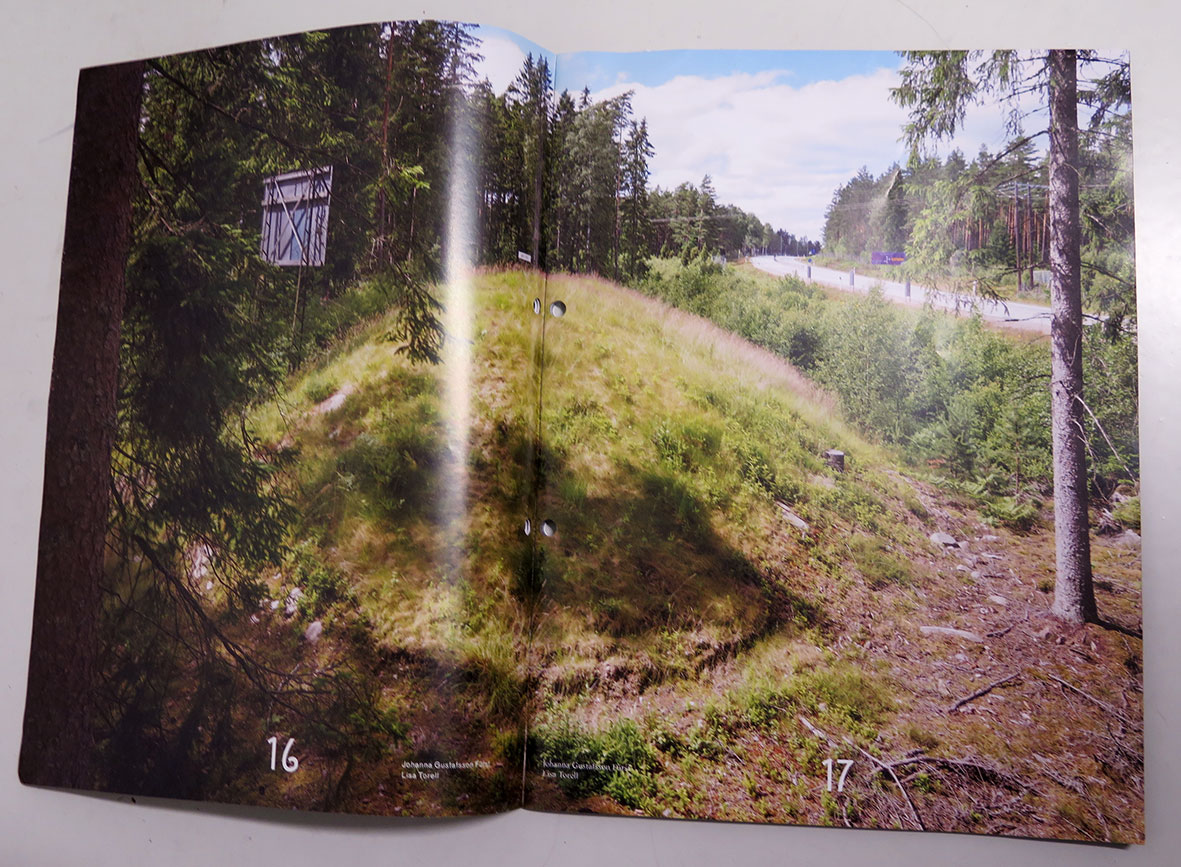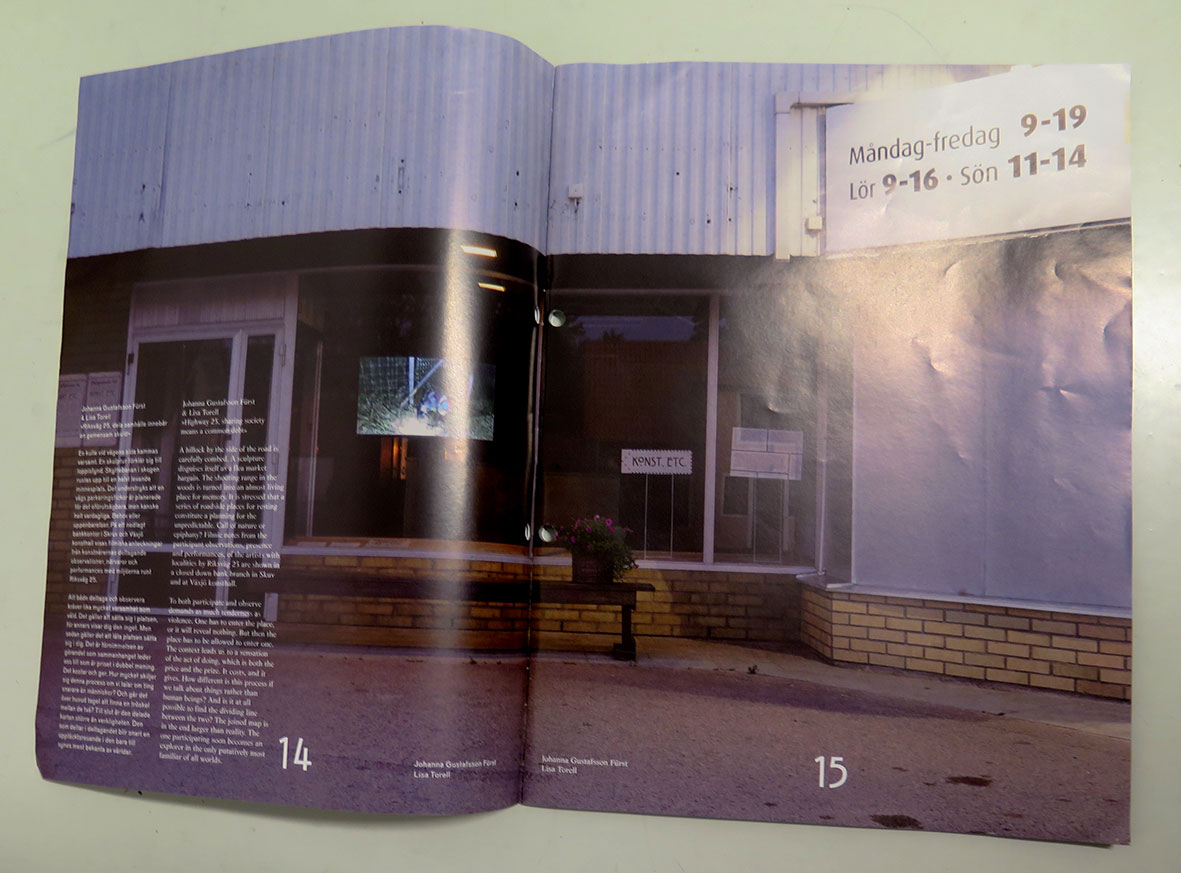Residence-in-Nature
Introduction by Åsa Jungnelius
Start, opening, beginning and continuation
Residence-in-Nature is not an Artist-in-Residence program. It is not a site-specific artistic work. Rather, it can be seen as an experiment and a method in the scale 1:1. We invite participants from different backgrounds, who express themselves artistically through a host of disciplines, to spend time and work in the region of Kronoberg. Residence-in-Nature is interested in what takes place through this presence and these collaborations and in how it relates to the specific context. It looks at what happens when local concerns and questions meet global ones, and at the result in form and content of the trading of knowledge.
Where can we meet art in a sparsely populated rural area mainly comprised of man-made nature in the shape of forestry, streams, old company towns in the transition from industry to post-industry, small towns, nature reserves, tourists, hiking and canoe trails? The aim of Residence-in-Nature is to let the participating artists live and work where they and their practices meet the inhabitants of the area waiting for the bus, in the forests, by the canoe trails, the libraries and roads. Involving them in a change of position leading to an embrace of the public space as a totality.
What is the meaning of the place for production and material? The glass industry was booming in Småland in the 1960s. Artists were invited to live and work in the region to create a new meaning for an industry that previously had made items for more prosaic use, like milk bottles and light bulbs. A mode of production mostly reliant on local materials like rock, glass and timber, became the node in the construction of a society where crafts, economy, labour and artistic figuration came together.
What type of economic development is needed for the construction of contemporary society when the concept of work is changing and many are swept up in flows of migration? Residence-in-Nature investigates everything from notions of community to tourism, consumption and the construction of society. What does one do for the other, and what does it mean for the collective, the community that we share? In which ways can an artistic production contribute to the discussion?
Residence-in-Nature was initiated by Åsa Jungnelius as a long-term collective art project. It was based on her own experiences of context-specific artistic work in a rapidly depopulating area where the post-industrial condition highlights a complex setting. The landscape in Småland is intimately linked with the material culture that gives the coordinates for our economic, social, political and ecological situation.
The initiative coincided with the wish of the regional local authority to through artistic work find a durable form for an experimental Artist-in-Residence program directly linked to the local context.




...
.................................. ..................